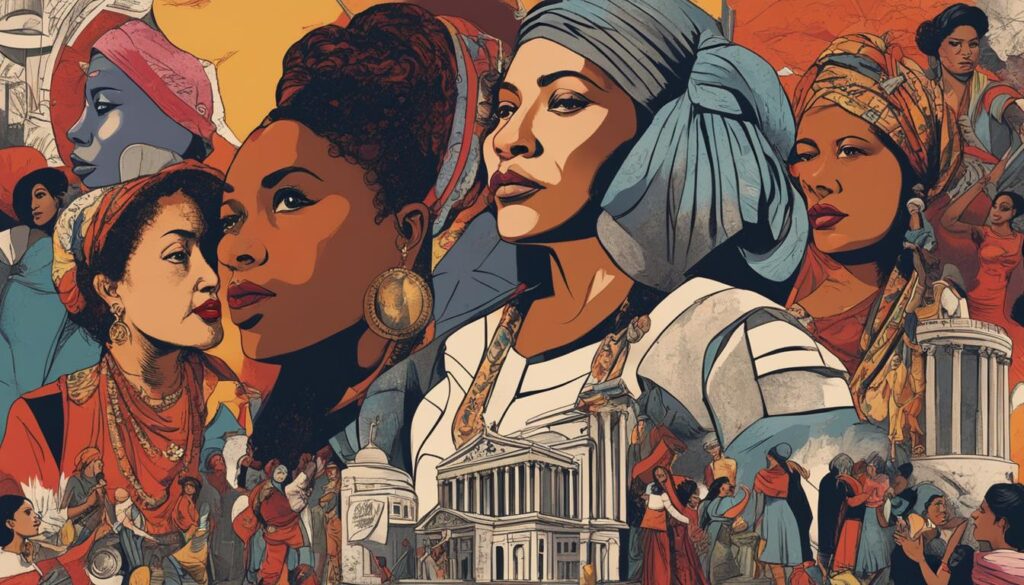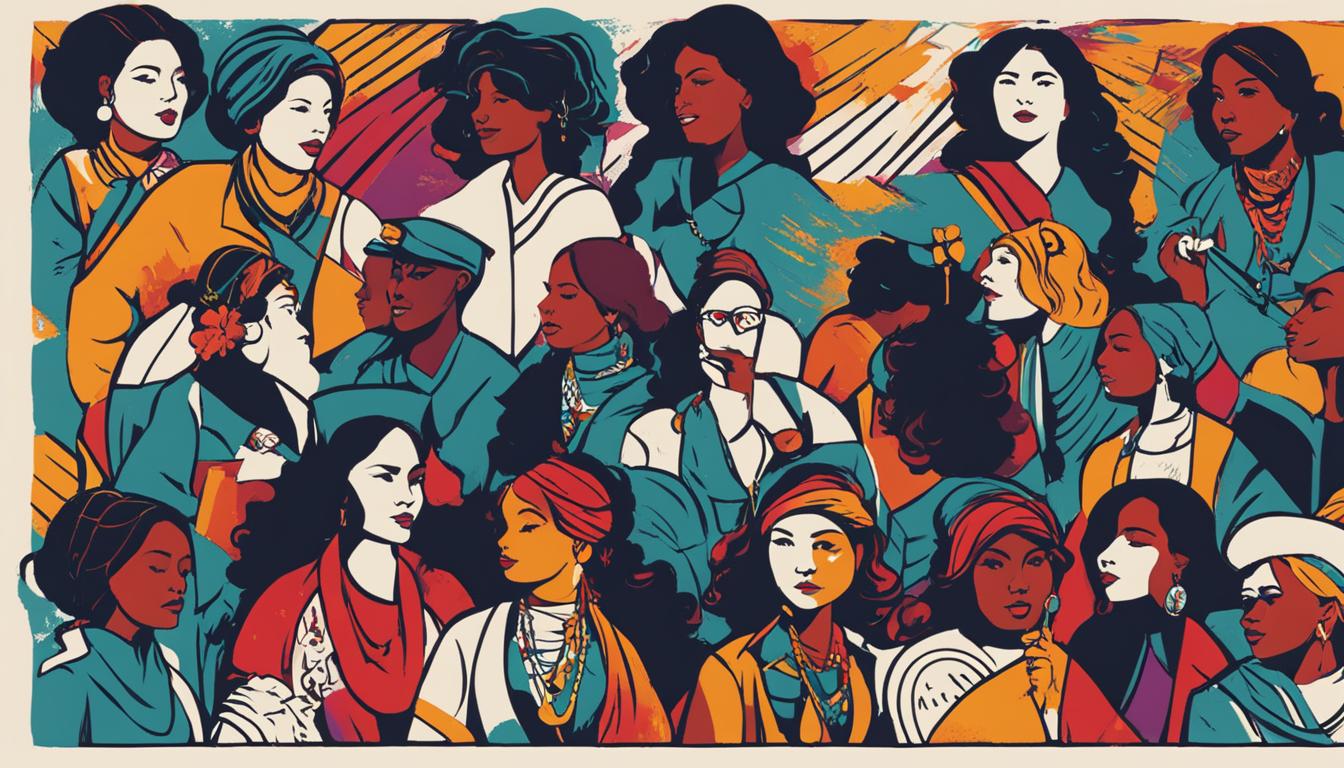“Women’s Voices, Feminist Visions” by Susan Shaw is a groundbreaking book that explores the crucial issues at the intersection of gender and feminism. This book offers a comprehensive overview of feminist scholarship by featuring the works of classic and contemporary feminist scholars. The book covers various topics, including historical perspectives on feminism, intersectionality and feminist theory, representation and media studies, gender and sexuality studies, global perspectives on feminism and activism, and contemporary issues and future directions.
Through this book, Shaw highlights the importance of feminist scholarship and its influence on contemporary discourse. It offers a nuanced perspective on the ways in which gender intersects with other social categories and how this intersectionality shapes our understanding of the world. Shaw’s insightful analysis of critical issues has made “Women’s Voices, Feminist Visions” a major contribution to feminist scholarship.
Key Takeaways
- “Women’s Voices, Feminist Visions” by Susan Shaw is a seminal text in feminist scholarship.
- The book covers various crucial topics at the intersection of gender and feminism.
- Shaw’s analysis of critical issues has made a major contribution to feminist scholarship.
- The book provides a comprehensive overview of feminist scholarship.
- It highlights the influence of feminist scholarship on contemporary discourse.
Overview of “Women’s Voices, Feminist Visions”
“Women’s Voices, Feminist Visions” by Susan Shaw is a seminal text in the field of feminist scholarship. Through a compilation of classic and contemporary readings, Shaw presents a comprehensive overview of feminist theory and activism.
At its core, this work emphasizes the importance of intersectionality and challenges readers to consider the complex ways in which gender intersects with other social categories such as race, class, and sexuality.
The text is organized thematically, with chapters dedicated to topics such as historical perspectives on feminism, representation and media studies, gender and sexuality studies, and global perspectives on feminism and activism. Throughout, Shaw highlights the voices of women from diverse backgrounds and regions, providing readers with a nuanced and comprehensive understanding of feminist thought.
| Theme | Description |
|---|---|
| Intersectionality | Shaw emphasizes the importance of considering the intersections of gender with other social categories such as race, class, and sexuality. |
| Feminist Activism | The text explores the history and current state of feminist activism, emphasizing the importance of global perspectives and solidarity. |
| Representation | Shaw examines the representation of women in media and popular culture, calling for greater diversity and nuance in these portrayals. |
| Gender and Sexuality | The text explores the social construction of gender and sexuality, critiquing societal norms and highlighting the importance of individual agency and identity. |
| Global Feminism | Shaw emphasizes the need for feminist scholarship and activism to address global issues impacting women, including poverty, education, and human rights. |
Overall, “Women’s Voices, Feminist Visions” provides a comprehensive introduction to feminist theory and activism. Its key themes and ideas continue to shape contemporary discourse and its intersectional approach to gender continues to be of utmost importance in academia and activism alike.
Historical Perspectives on Feminism
“Women’s Voices, Feminist Visions” provides an in-depth analysis of the historical context of feminism. The book offers an overview of the feminist movements of the past, highlighting key female figures who have played pivotal roles in influencing women’s rights.
The first wave of feminism, which began in the late 19th century, focused on achieving women’s suffrage. Women like Susan B. Anthony and Elizabeth Cady Stanton led the fight for women’s right to vote, which was finally granted in 1920 with the passage of the 19th Amendment to the US Constitution.
The second wave of feminism, which emerged in the 1960s and 1970s, pushed for broader social and political change and addressed issues such as reproductive rights, workplace discrimination, and domestic violence. Scholars like Betty Friedan and Gloria Steinem were instrumental in shaping this movement, which laid the foundation for contemporary feminist thought.

Finally, the third wave of feminism, which began in the 1990s, has focused on inclusivity and diversity, recognizing the intersectionality of gender, race, class, and sexuality. “Women’s Voices, Feminist Visions” highlights the progress made by feminists throughout history and underscores the importance of understanding the historical context of contemporary feminist discourse.
Intersectionality and Feminist Theory
Intersectionality is a central concept in feminist scholarship, and Susan Shaw’s book, “Women’s Voices, Feminist Visions,” provides an excellent resource for understanding this complex idea. Intersectionality recognizes that multiple social identities, such as gender, race, class, and sexuality, intersect to create interconnected systems of oppression and privilege. Through an intersectional lens, scholars can better understand the experiences of individuals who, for example, face discrimination based on both their race and gender.
Shaw’s book delves into the evolution of feminist theory to incorporate intersectionality and address the complexities of identities and social structures that perpetuate inequality. Intersectionality has become essential to feminist discourse because it provides a wider and more inclusive understanding of oppression, as well as its effects on marginalized communities.
One important example discussed in “Women’s Voices, Feminist Visions” is Kimberlé Crenshaw’s concept of “intersectional invisibility” which occurs when the experiences of individuals with intersecting identities are ignored or excluded. This exclusion can occur within movements or larger social and political systems, which highlights the importance of intersectionality in feminist theory and activism.
In conclusion, Shaw’s discussion of intersectionality and its place within feminist theory offers a critical foundation for understanding multiple forms of oppression and ways in which they intersect. This intersectional approach encourages feminist scholars and activists to think beyond singular forms of oppression and strive towards more inclusive and equitable communities.
Representation and Media Studies
Representation in media plays a significant role in shaping societal perceptions of gender. In “Women’s Voices, Feminist Visions,” Shaw emphasizes the importance of media analysis in feminist discourse. By examining media images and messages, scholars can challenge harmful stereotypes and promote more accurate representations of women.
Media studies also allow scholars to understand how power and privilege intersect with gender. For example, the underrepresentation of women and people of color in media leadership positions can lead to biased coverage and limited diversity in storytelling. By analyzing these issues, feminist scholars are working to promote greater representation and equality in media.
Media Analysis Example
Table: Comparison of Lead Film Roles by Gender (2010-2019)
| Year | Male Lead | Female Lead |
|---|---|---|
| 2010 | 44 | 14 |
| 2011 | 43 | 20 |
| 2012 | 41 | 25 |
| 2013 | 36 | 21 |
| 2014 | 40 | 19 |
| 2015 | 34 | 22 |
| 2016 | 34 | 22 |
| 2017 | 35 | 19 |
| 2018 | 37 | 20 |
| 2019 | 40 | 19 |
The data presented above illustrates the gender imbalance in lead film roles, with men consistently outnumbering women over the past decade. Feminist scholars argue that this underrepresentation perpetuates harmful stereotypes and limits opportunities for women in the film industry.

Gender and Sexuality Studies
In “Women’s Voices, Feminist Visions,” Shaw offers a comprehensive examination of the intersection of gender and sexuality studies. She highlights how feminist scholars analyze societal norms around sexuality and gender identity. The book also delves into the challenges faced by those who identify as gender non-conforming, exploring how they navigate societal expectations and norms.
Shaw’s book emphasizes the need to consider how gender and sexuality intersect with other aspects of identity, such as race, class, and ability. By taking an intersectional approach to gender and sexuality studies, scholars can better understand and address the unique experiences of marginalized groups.
Overall, “Women’s Voices, Feminist Visions” offers a thought-provoking analysis of gender and sexuality studies, and the ways in which feminist scholars challenge traditional notions surrounding these topics.
Global Perspectives on Feminism and Activism
In “Women’s Voices, Feminist Visions,” Susan Shaw explores the importance of global feminism and activism in addressing issues impacting women worldwide. The text highlights the interconnectedness of feminist movements, and how they have been able to cross borders to enact change.
A key theme explored in “Women’s Voices, Feminist Visions” is the importance of understanding the unique cultural, historical, and political contexts of different regions. Through case studies and personal narratives, the text highlights the ways in which feminist activism has taken shape in different parts of the world.
An example of this is the work of Nigerian activist Chimamanda Ngozi Adichie, who has spoken out against gender-based violence and inequality in her country. Adichie’s activism is rooted in the specific challenges faced by Nigerian women, but her message has resonated with feminists around the world.
Another important aspect of the book is its exploration of the ways in which feminist movements have worked together to address global issues. For example, the text highlights the role of transnational activism in addressing issues such as climate change, human trafficking, and reproductive rights.
“Women’s Voices, Feminist Visions” emphasizes the importance of cross-border solidarity and collaboration in the fight for gender equality and justice. It provides valuable insights into the global feminist movement, and its efforts to create a more equitable and just world for women everywhere.
Contemporary Issues and Future Directions
As “Women’s Voices, Feminist Visions” highlights, contemporary feminism is facing a range of challenges. One of the most pressing is the need to address ongoing inequalities faced by women, particularly marginalized groups such as women of color, women with disabilities, and LGBTQ+ individuals.
Another key issue is the rise of the far right and accompanying backlash against women’s rights, as evidenced by the #MeToo movement and attacks on reproductive rights. Feminist scholars and activists must continue to push back against these regressive forces and fight for gender equality.
Looking ahead, there are several potential future trends in feminist scholarship. One is a greater focus on intersectionality and the interconnectedness of various social categories, as discussed in section 4. Another is an increased emphasis on global perspectives and the need for a truly inclusive and diverse feminist movement, as explored in section 7.
Overall, “Women’s Voices, Feminist Visions” provides a valuable resource for understanding these contemporary issues and potential future directions in feminist scholarship. By continuing to engage with and challenge these complex topics, we can work towards a more equitable and just society for all individuals, regardless of gender identity or expression.
Conclusion
In “Women’s Voices, Feminist Visions,” Susan Shaw provides a comprehensive overview of feminist scholarship and its evolution over time. Through her exploration of historical perspectives, intersectionality, representation and media studies, gender and sexuality studies, global perspectives, and contemporary issues, Shaw presents insightful analysis and critiques of societal norms and challenges faced by feminists. Overall, “Women’s Voices, Feminist Visions” is a significant contribution to feminist scholarship and an essential read for anyone interested in the field. It encourages further inquiry and exploration of these critical themes, paving the way for future feminist insights and progress.



